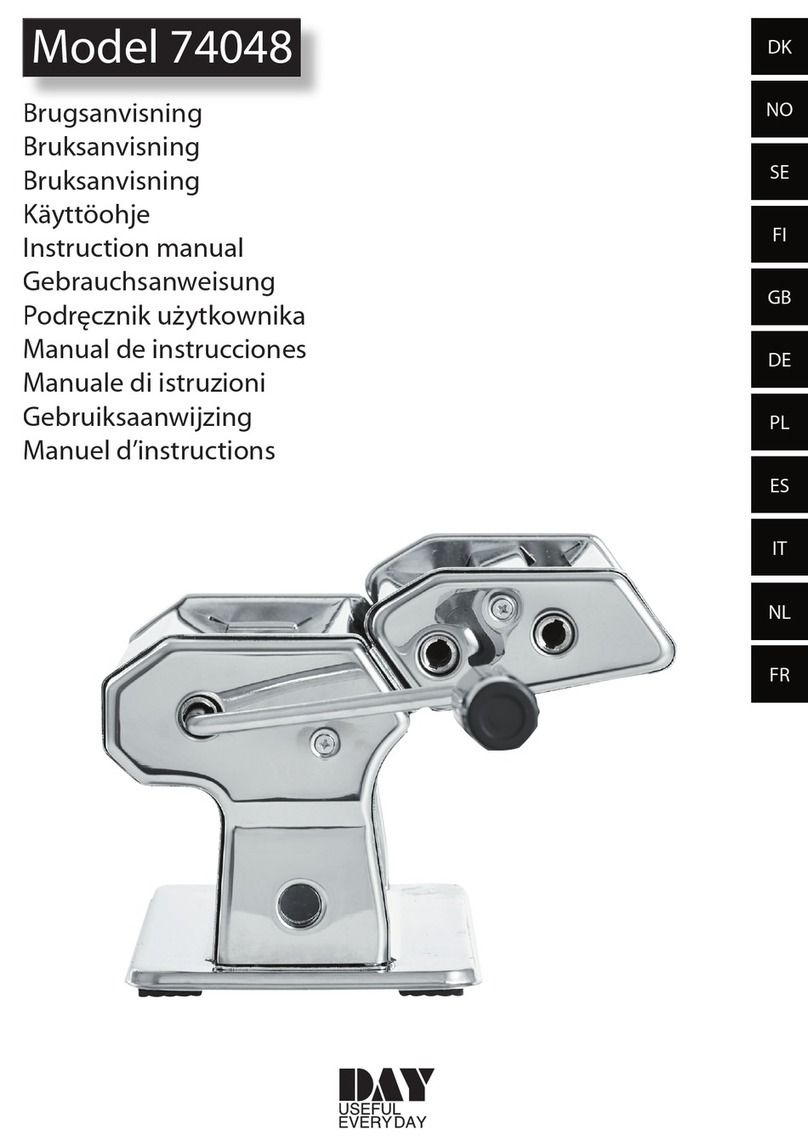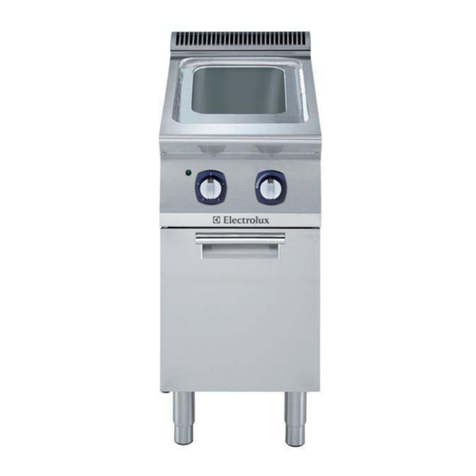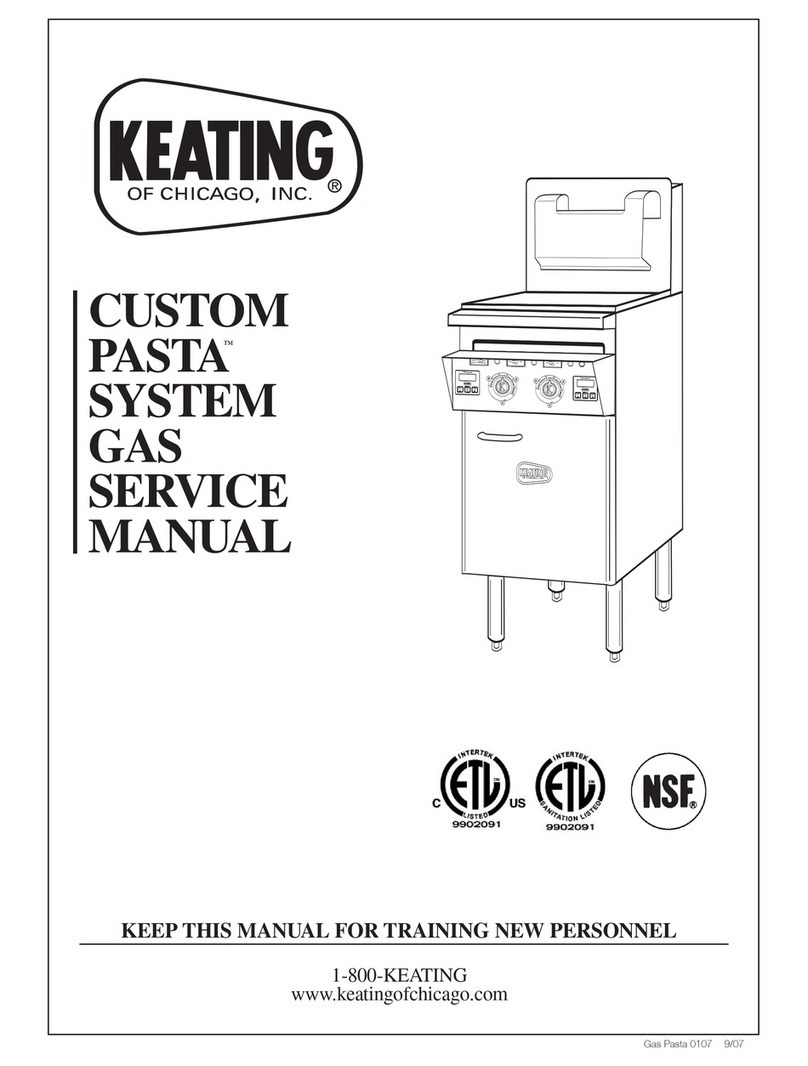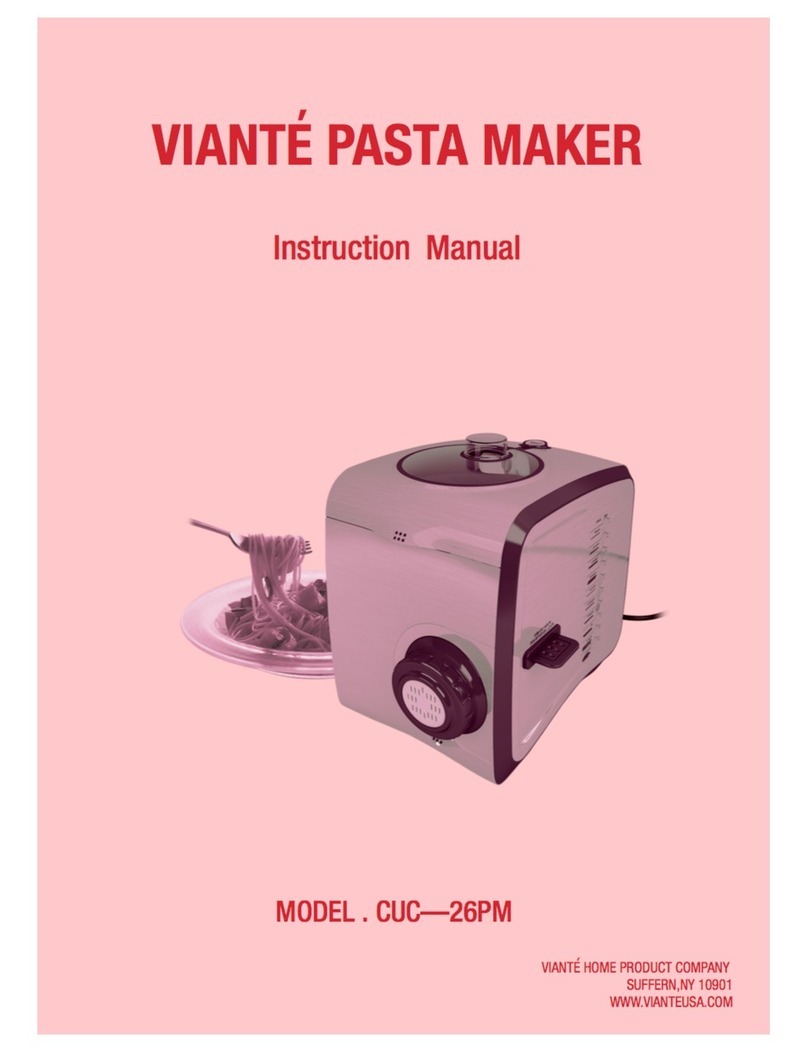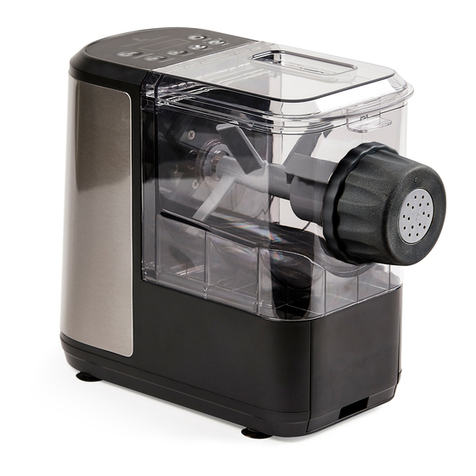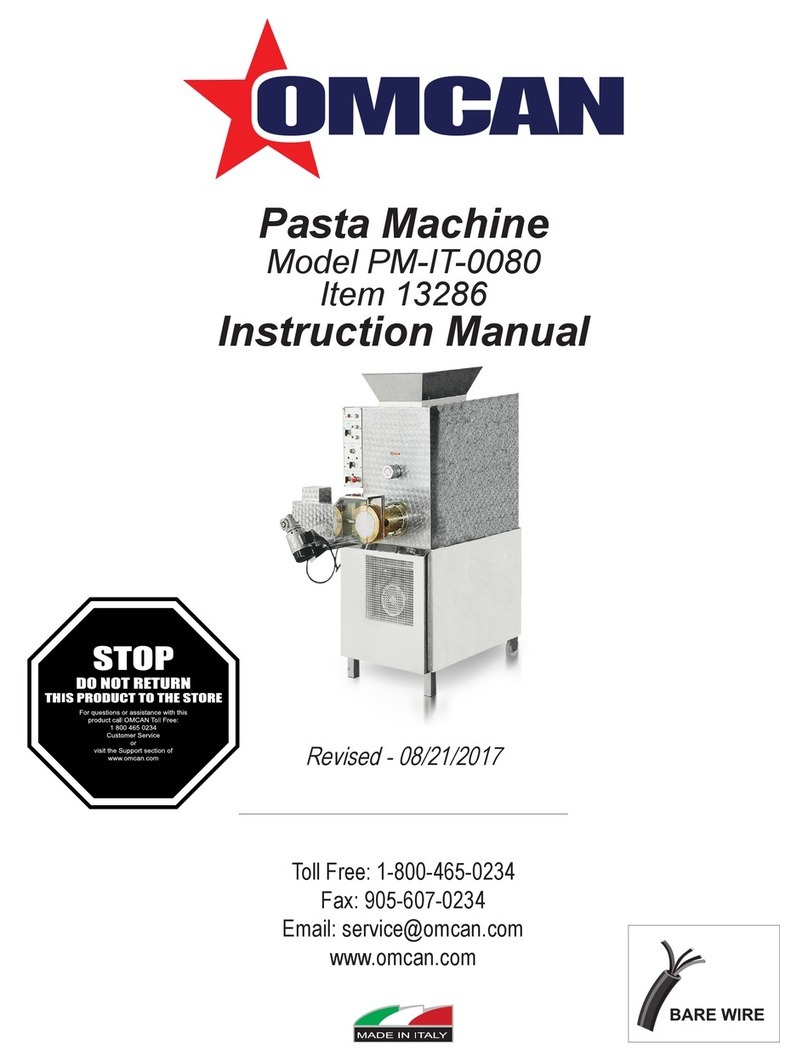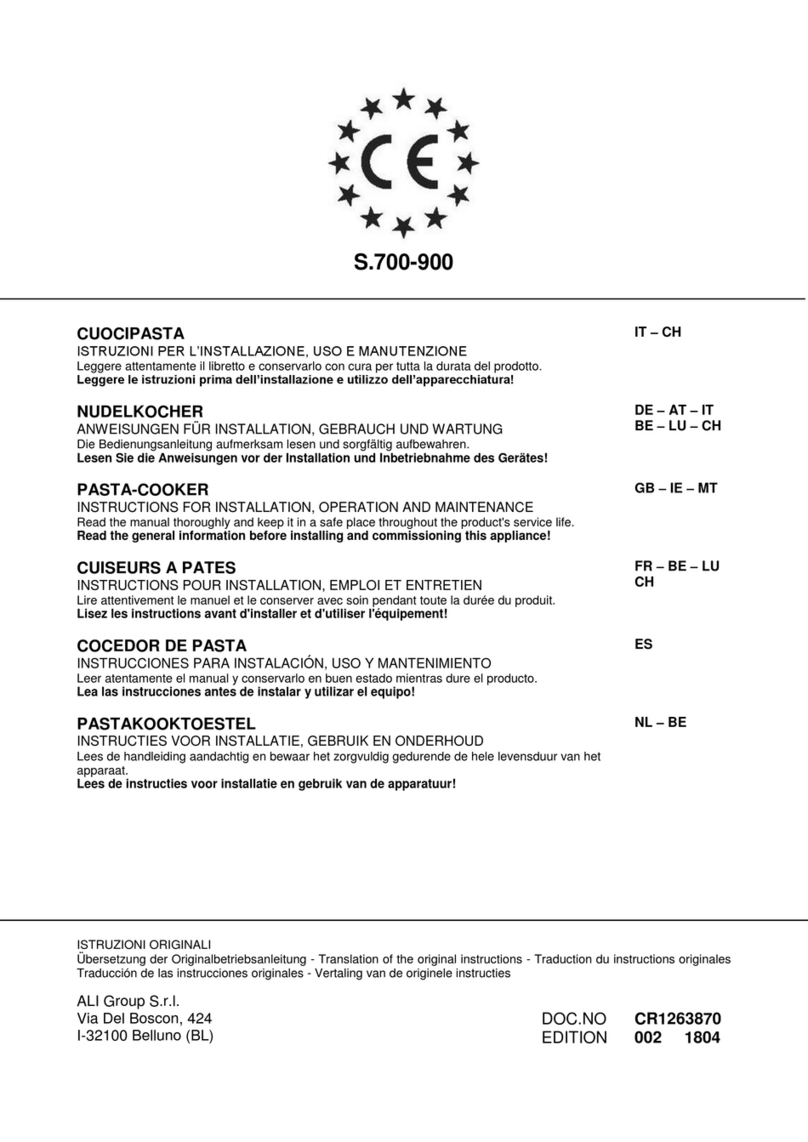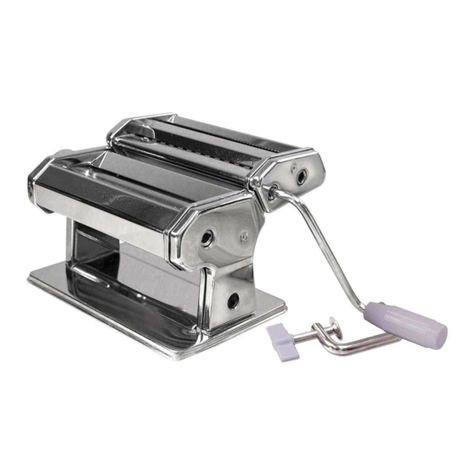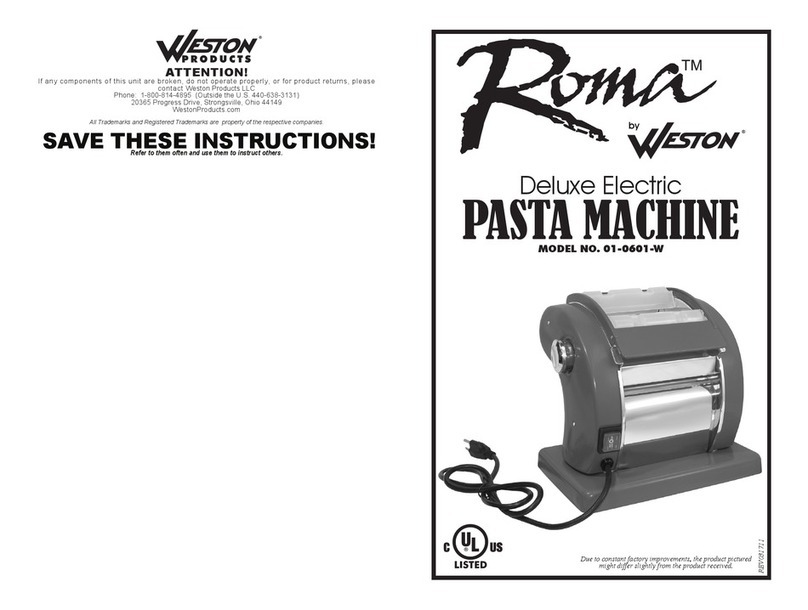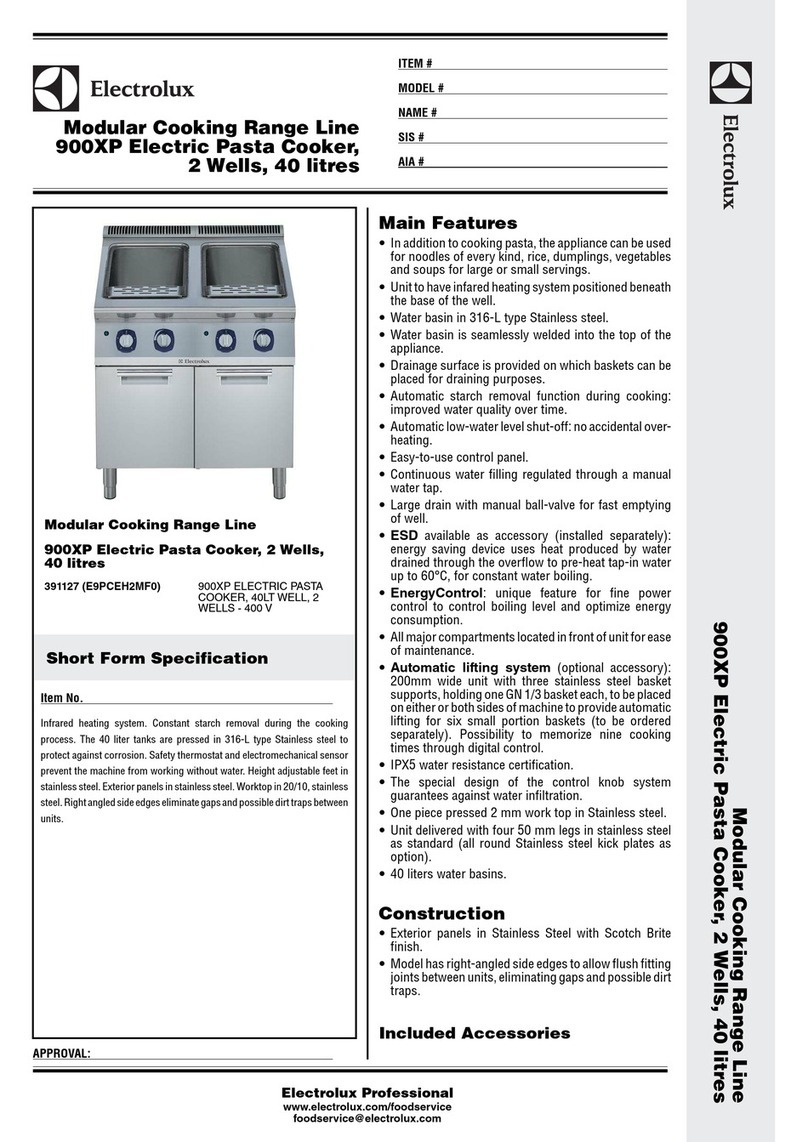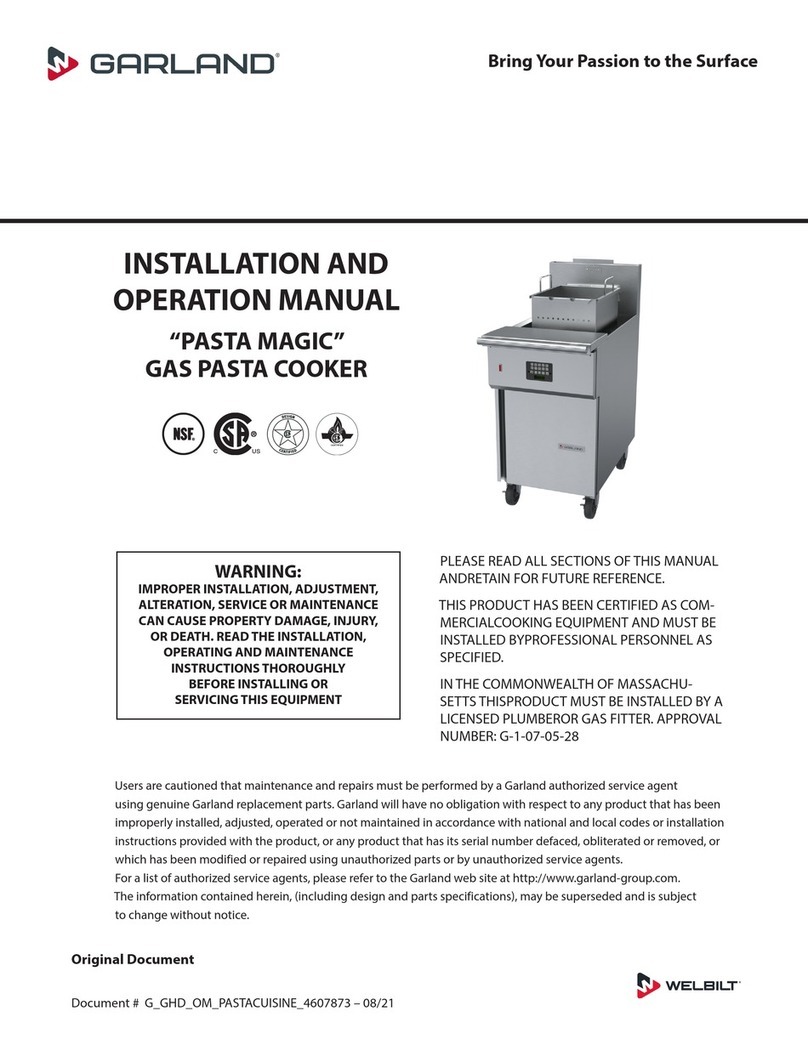
1. Read all instructions.
2. This appliance is not intended for
use by persons (including children) with
reduced physical, sensory, or mental
capabilities, or lack of experience and
knowledge, unless they are closely
supervised and instructed concerning
use of the appliance by a person
responsible for their safety.
3. Close supervision is necessary
when any appliance is used by or near
children. Children should be supervised
to ensure that they do not play with the
appliance.
4. Check for damaged parts. Before
using the Pasta Machine, check that
all parts are operating properly and
perform their intended functions. Check
for alignment of moving parts, binding of
moving parts, and any other conditions
that may affect the operation.
5. Turn the appliance OFF, then unplug
from the outlet when not in use, before
assembling or disassembling parts, and
before cleaning. To unplug, grasp the
plug and pull from the outlet. Never pull
from the power cord.
6. To protect against risk of electric
shock, do not immerse cord, plug, or
motor base in water or other liquid.
7. Do not operate any appliance with a
damaged supply cord or plug, or after
the appliance malfunctions or has been
dropped or damaged in any manner.
Supply cord replacement and repairs
must be conducted by the manufacturer,
its service agent, or similarly qualied
persons in order to avoid a hazard. Call
the provided customer service number
for information on examination, repair, or
adjustment.
SAVE THESE INSTRUCTIONS
8. If the unit becomes jammed,
disconnect the unit from the power
source before removing the jammed
material.
9. Do not force the dough through the
unit. The Pasta Machine will perform
better and be safer at the rate for which it
was designed.
10. TIE BACK loose hair and clothing
and roll up long sleeves before operating
the Pasta Machine. REMOVE ties,
rings, watches, bracelets or other jewelry
before operating the appliance.
11. Do not use outdoors.
12. Do not let cord hang over edge of
table or counter, or touch hot surfaces,
including stove.
13. Do not place on or near a hot gas or
electric burner, or in a heated oven.
14. Do not open the housing of this unit.
Opening the housing of this unit will void
any warranty.
15. Always use the Pasta Machine on a
dry, level surface.
16. Never put ngers or other objects
near or into any of the rollers while the
Pasta Machine is plugged in. Personal
injury or unit damage may result.
17. Avoid using salt in the pasta dough.
Salt may damage the machine and void
warranty.
3
ENGLISH INSTRUCTIONS
IMPORTANT SAFEGUARDS
When using electrical appliances, basic safety precautions should always
be followed to reduce the risk of re, electric shock, and/or injury to persons,
including the following:


